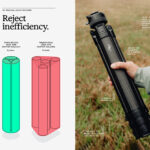Gobo [goh-boh] noun – In photography, any object that goes between your subject and your light source. Gobos are commonly used to cast different patterns of light onto your subject. Popular gobos include grids and window blinds, but can be anything that interrupts the natural pattern of light. This video tutorial will show you how to use gobos in portrait photography:
When using gobos, here are some things to keep in mind:
- Shadow Harshness – This is determined by two things: The distance between your gobo and your light, and the distance between your subject and the gobo. The further away the light is from the gobos, the harsher the shadow, and vice versa. The opposite applies for the subject and gobo’s distance. The closer they are, they harsher the shadow, the further away, the softer.
- Obscuring Shadows – Make sure that your shadows are not obscuring any important part of your subject like the model’s eyes, or a piece of jewelry if that’s what you want to stand out.
- Gobo Design and Shape – The design and shape of the gobo will determine what kind of pattern it creates on your subject. Where the gobo is placed will also affect the pattern. A tight grid patter will appear as such if it is far away from your light source and close to your subject. But if it is placed close to the light source, it will appear as more of a soft blend of brighter and darker spots.
- Gobos Opacity – Many of the things you will use will probably be 100% opaque, but translucent objects can create unique looks on your subject too, especially if they are colored.

Anything can be used as a gobo: a plant, chair, grid, window shutter, etc.
Like This Article?
Don't Miss The Next One!
Join over 100,000 photographers of all experience levels who receive our free photography tips and articles to stay current:






this video might be an intro to using a gobo, hence perhaps thats why the presenter didn’t mention that the shadows you see formed by the gobo using a modelling light, is very very different from the flash tube.
its usually not as harsh or dark as the modelling light
I was disappointed as well, Leon. I like seeing the effect.
I was disappointed not to see more shots with different GOBO positions and types. Very interesting subject.